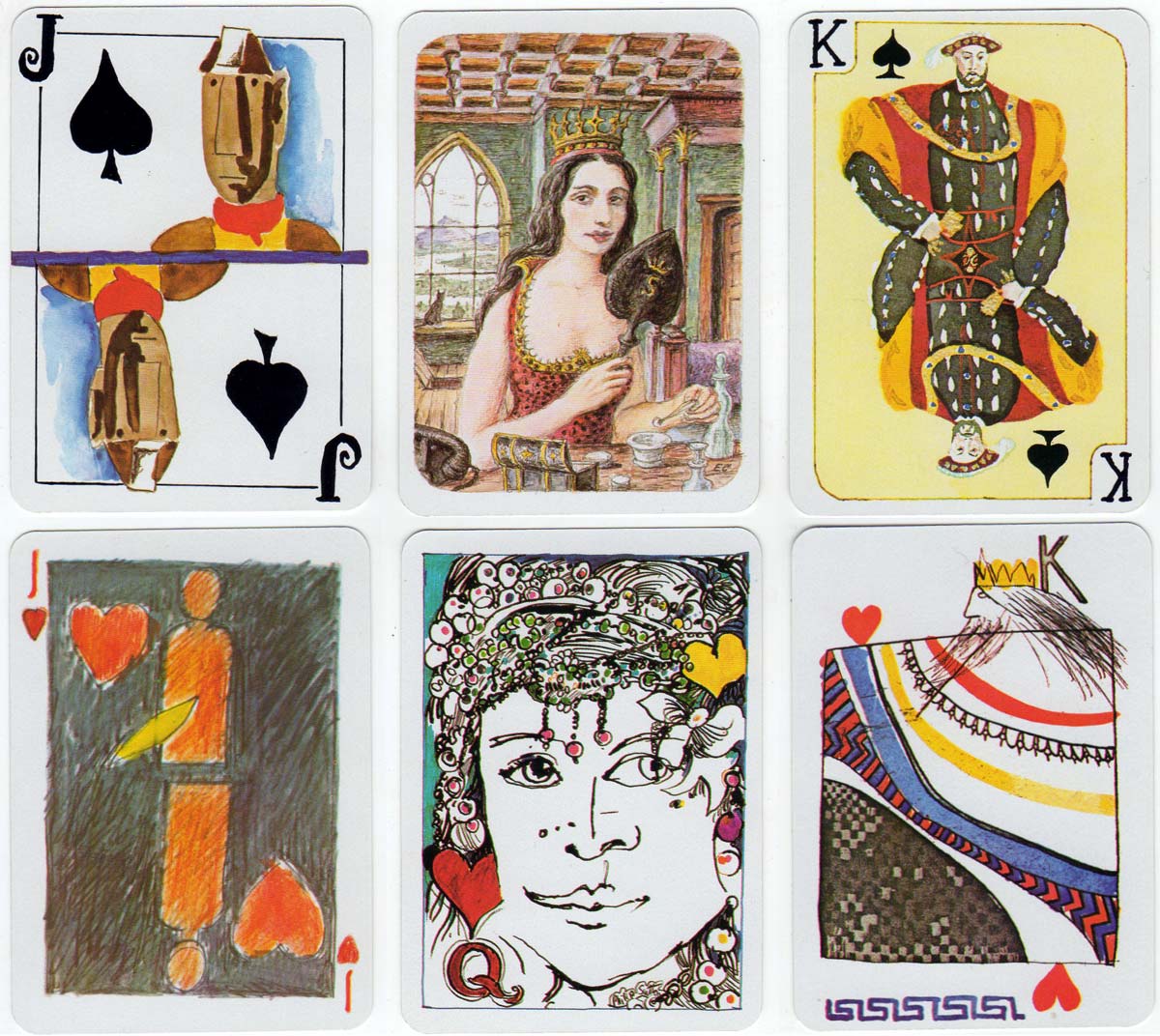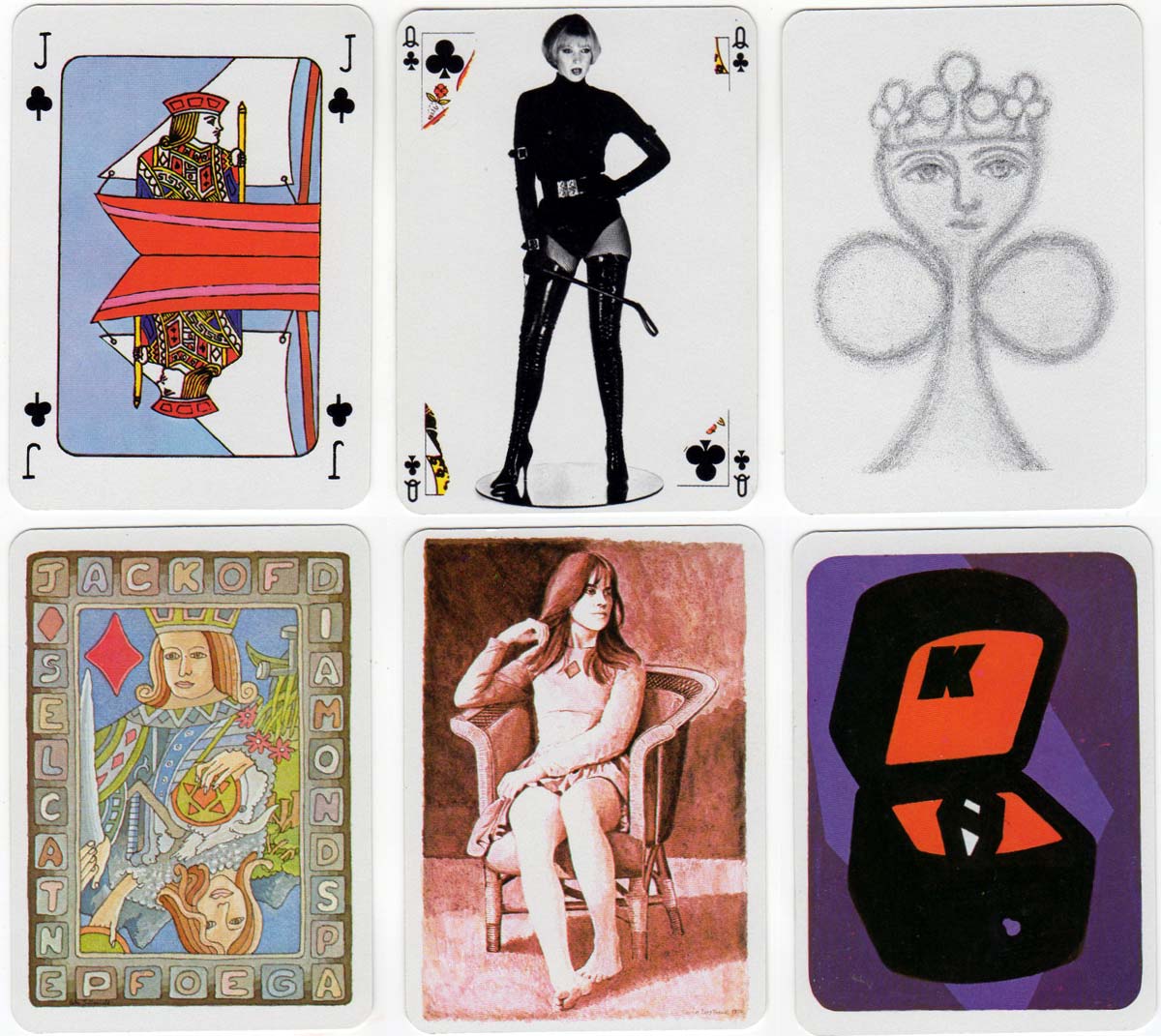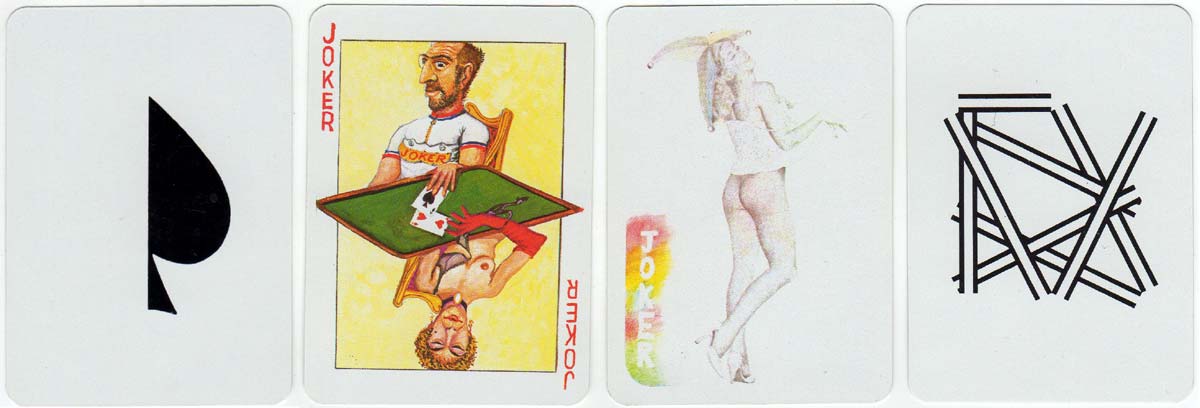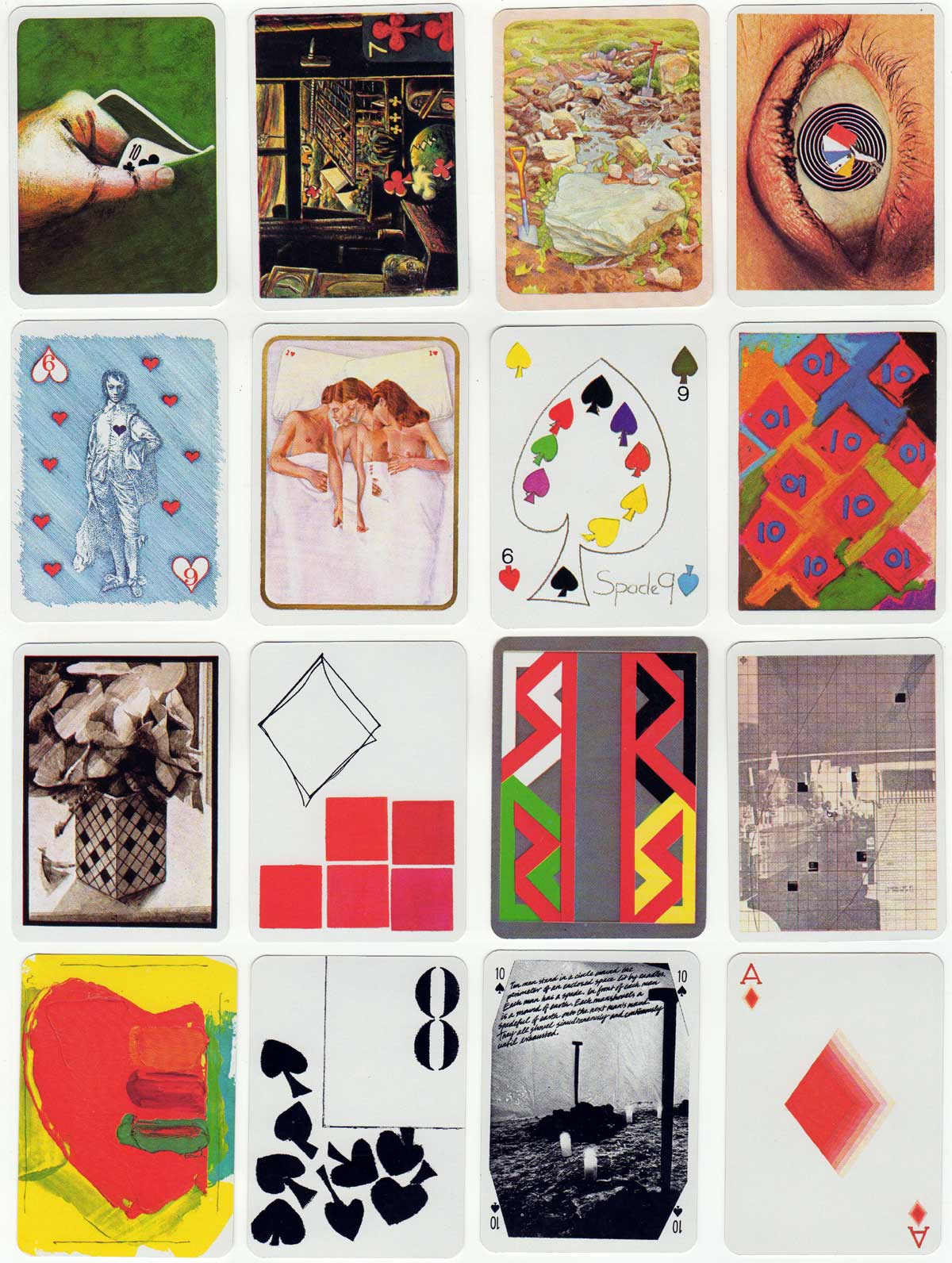The Deck of Cards
The Deck of Cards by Andrew Jones Art, 1979.
“The Deck of Cards” collaborative deck commissioned by the JPL Gallery of London, published by Andrew Jones Art, 1979. Not necessarily easy to play with, but according to the Royal Academy of Arts:
“In 1976 the JPL Gallery in London asked fifty four British artists to create their version of a playing card. Each artist was given the task to create a specific card from the pack; plus an artist to create the reverse pattern for the entire deck and an artwork for the pack itself. When collector Andrew Jones saw the show he purchased the entire collection and approached artists with the request to create an actual pack of cards from their artworks. The cards were then then sold in a range of outlets including gallery shops such as the RA. Some of the best known British artists from the 20th century were involved with this project including many RAs.”
See the Extra Card► See the Box►



Above: The Deck of Cards collaborative deck published by Andrew Jones Art, printed by Carta Mundi, 1979.
Addendum - courtesy Roddy Somerville.
There are many different editions of this pack. These can be identified according to the type of box used, the name of the publisher and the colour of some of the text on the title card.

Above: title cards for 1st edition, tuck box (Andrew Jones, no date) and tuck box (Alan Driscoll) editions (click to zoom).
The first edition consisted of a numbered edition of 10,000 packs – a not inconsiderable print run for a non-standard, ‘unplayable’ set – in a hard box. The bottom line of text on the title card is in red. This was followed by an unnumbered edition in a hard box marked “HWGA”, standing for “Here we go again” (print run was probably 5,000). For the next edition, the hard box was marked “Britain” on the bottom edge. By now, the text on the title card had been changed to white. After this, the hard box was abandoned, replaced by a tuck box but still published by Andrew Jones Art, with a title card where the date “1979” has been removed. Then, in about 1990 or 1991, Andrew Jones sold the distribution rights to Alan Driscoll who continued to market the pack with his own name on the box and on the title card (with the date “1979” included again).
In total, well over 100,000 of these packs have been produced since 1979, surely making it the most successful ‘unplayable’ set ever!
As well as the playing cards, a deck of postcards and a poster were produced, using all of the designs in the pack.
Quite early on, Andrew Jones lent the original artwork to the British Council for a touring exhibition which went all over the world.

By Matt Probert
Member since March 02, 2012
I have adored playing cards since before I was seven years old, and was brought up on packs of Waddington's No 1. As a child I was fascinated by the pictures of the court cards.
Over the next fifty years I was seduced by the artwork in Piatnik's packs and became a collector of playing cards.
Seeking more information about various unidentified packs I discovered the World of Playing Cards website and became an enthusiastic contributor researching and documenting different packs of cards.
I describe my self as a playing card archaeologist, using detective work to identify and date obscure packs of cards discovered in old houses, flea markets and car boot sales.
Related Articles

Tactics Design
Late modernist Japanese playing cards designed by Masayoshi Nakajo for Tactics Design.

Scientific Whist
“Scientific Whist” : standard cards with instructions for play on the faces by Chas Goodall & Son, 1...

Agent Provocateur
Branded lingerie collection in a pack of pin-up playing cards.

Nimbus playing cards
Mike Steer’s weather-themed pack with suits in four colours and backs for cardistry.

Agatha Christie and Playing Cards revisited
Agatha Christie uses card-play as a primary focus of a story, and as a way of creating plots and mot...

The Decadent Deck
Studies in the eroticism of the female body by Inge Clayton.

Historic Shakespeare
“Historic Shakespeare” playing cards featuring Shakespearean characters by Chas Goodall & Son.

Sunday Night / Nichiyoubi no Yoru
An irreverent, avant-garde deck unofficially titled "Nichiyoubi no Yoru" (Sunday Night), designed by...

Copechat Paramount Sorting System
Preserving the past: a specimen deck showcasing edge-notched cards and their ingenious sorting syste...

Heartsette by Herbert Fitch & Co, 1893
A glimpse into a busy print and design office in late Victorian London.

Emilio Tadini playing cards
Beautiful dreamlike playing card designs by Emilio Tadini.

Batman® playing cards
Batman playing cards published by InterCol of London 1989.

Can You Believe Your Eyes?
“Can You Believe Your Eyes?” playing cards featuring visual illusions & other oddities.

Pastime Playing Cards for the Blind
The “Pastime” Playing Cards for the Blind manufactured by Goodall & Son Limd., c.1910.

Zürcher Festspiel 1903
Swiss-suited pack designed by Robert Hardmeyer featuring figures from art and politics.

Songs with Flute accompaniment
Eighteenth century English engraved cards with music for voice and flute.
Most Popular
Our top articles from the past 28 days

